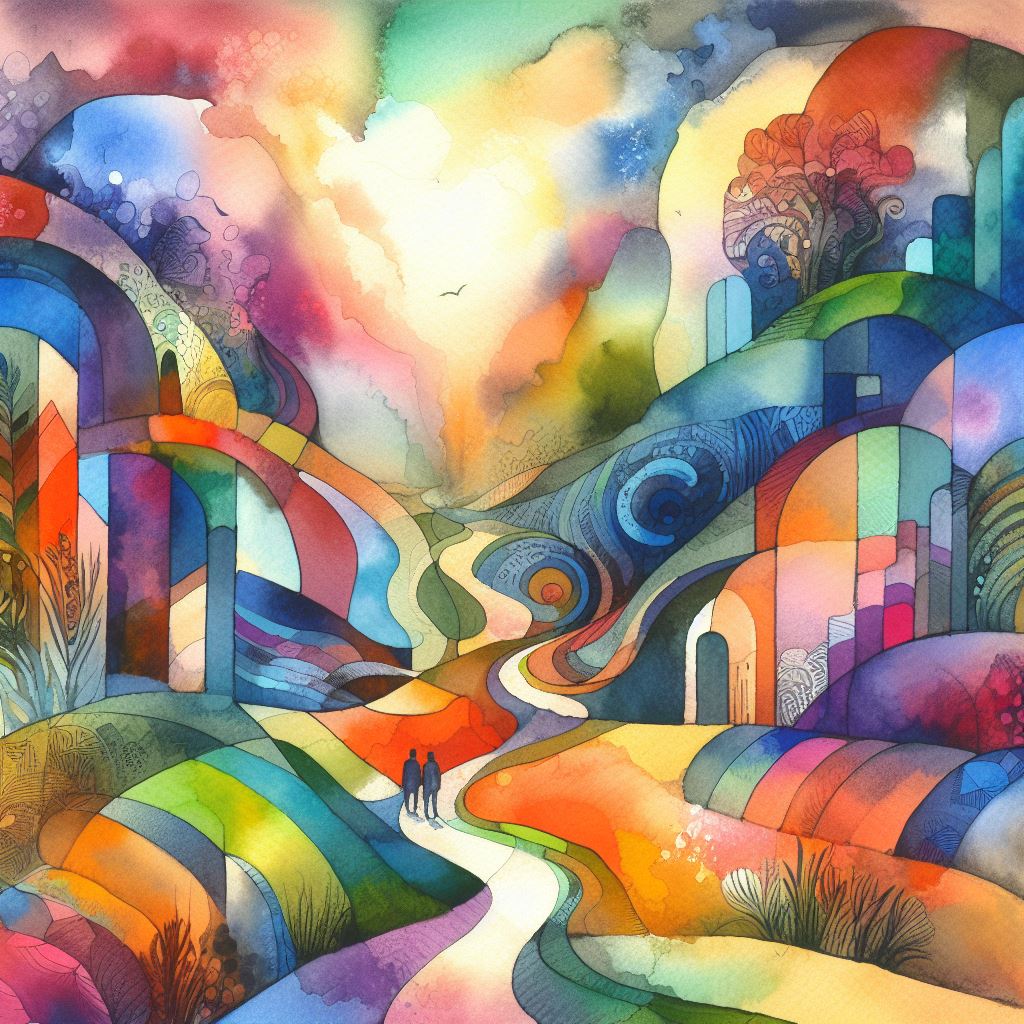Embarking on a Vibrant Journey: Exploring Colors, Shapes, and Basic Numbers in Italian
Learning a new language opens up a world of possibilities. As you delve into the Italian language, you’ll find that mastering the basics such as colors, shapes, and numbers forms a colorful foundation for your linguistic journey. Let’s embark on this vibrant voyage together!
Colors (Colori)
Embracing the colors in Italian is like painting your conversations with emotion and description. Here are some basic colors to start with:
- Red (Rosso): As vibrant as the love and passion Italy is known for.
- Blue (Blu): Calm and serene like the waters of the Mediterranean.
- Green (Verde): Lush as the rolling hills of Tuscany.
- Yellow (Giallo): Bright and cheerful like the Italian sun.
- Black (Nero): As classic and elegant as a tailored Italian suit.
- White (Bianco): Pure and simple, like a scoop of creamy gelato.
Shapes (Forme)
Recognizing shapes is a fun and visual way to expand your Italian vocabulary. Here are some basic shapes:
- Circle (Cerchio): The round piazzas that dot Italian cities.
- Square (Quadrato): Like the many square buildings and plazas.
- Triangle (Triangolo): As found in the peaks of Italian cathedrals.
- Rectangle (Rettangolo): Common in the layout of historic Roman streets.
- Oval (Ovale): A softer, elongated circle, like many Italian mirrors and frames.
Basic Numbers (Numeri)
Numbers are crucial for many daily interactions, such as shopping or telling time. Here are the numbers one to ten in Italian:
- One (Uno)
- Two (Due)
- Three (Tre)
- Four (Quattro)
- Five (Cinque)
- Six (Sei)
- Seven (Sette)
- Eight (Otto)
- Nine (Nove)
- Ten (Dieci)
Armed with the knowledge of colors, shapes, and basic numbers, you’re well on your way to navigating the beautiful landscape of the Italian language. As you continue exploring, you’ll find that these basics enrich your understanding, making your linguistic journey as vibrant and exciting as a stroll through an Italian piazza.
| Italian Word | English Translation | IPA Pronunciation |
|---|---|---|
| Rosso | Red | ˈrɔsso |
| Blu | Blue | blu |
| Verde | Green | ˈverde |
| Giallo | Yellow | ˈʤallo |
| Nero | Black | ˈnɛro |
| Bianco | White | ˈbjanko |
| Cerchio | Circle | ˈʧɛrkjo |
| Quadrato | Square | kwaˈdrato |
| Triangolo | Triangle | triˈaŋɡolo |
| Rettangolo | Rectangle | retˈtaŋɡolo |
| Ovale | Oval | oˈvale |
| Uno | One | ˈuno |
| Due | Two | duːe |
| Tre | Three | tre |
| Quattro | Four | ˈkwattro |
| Cinque | Five | ˈʧiŋkwe |
| Sei | Six | sei |
| Sette | Seven | ˈsette |
| Otto | Eight | ˈɔtto |
| Nove | Nine | ˈnɔve |
| Dieci | Ten | ˈdjɛʧi |
| Rettangolare | Rectangular | rettaŋɡoˈlaːre |
| Circolare | Circular | ʧirkoˈlaːre |
| Quadrilatero | Quadrilateral | kwadriˈlatɛro |
| Poligono | Polygon | poliˈɡono |
| Ellisse | Ellipse | elˈlisse |
| Rosa | Pink | ˈroːza |
| Arancione | Orange | aranˈʧoːne |
| Marrone | Brown | marˈroːne |
| Viola | Purple | ˈvjɔːla |
- Discussing Colors
- A: „Qual è il tuo colore preferito?“ (What is your favorite color?)
- B: „Il mio colore preferito è il blu, è calmo come il mare. E il tuo?“ (My favorite color is blue, it’s calm like the sea. And yours?)
- A: „Mi piace il rosso, è un colore molto forte e vivo. Mi piace anche il rosa.“ (I like red, it’s a very strong and lively color. I also like pink.)
- Talking About Shapes
- A: „Quale forma preferisci, cerchio o quadrato?“ (Which shape do you prefer, circle or square?)
- B: „Preferisco il cerchio, è una forma morbida. Ma mi piacciono anche i triangoli.“ (I prefer the circle, it’s a soft shape. But I also like triangles.)
- Counting Objects
- A: „Quanti libri hai?“ (How many books do you have?)
- B: „Ho dieci libri. E tu, quanti ne hai?“ (I have ten books. And you, how many do you have?)
- A: „Ne ho solo cinque.“ (I have only five.)
- Describing a Painting
- A: „Questo quadro ha molte forme interessanti. Vedi il rettangolo e l’ellisse?“ (This painting has many interesting shapes. Do you see the rectangle and the ellipse?)
- B: „Sì, e c’è anche un poligono. È molto unico.“ (Yes, and there’s also a polygon. It’s very unique.)
- Shopping for Clothing
- A: „Ti piace questa camicia arancione o quella marrone?“ (Do you like this orange shirt or that brown one?)
- B: „Preferisco quella marrone, è più classica. Ma la camicia viola lì è anche bella.“ (I prefer that brown one, it’s more classic. But the purple shirt over there is also nice.)
- Discussing Geometry
- A: „Nella geometria, il quadrilatero ha quattro lati, giusto?“ (In geometry, a quadrilateral has four sides, right?)
- B: „Corretto. E un rettangolare è un tipo di quadrilatero.“ (Correct. And a rectangle is a type of quadrilateral.)
- At the Park
- A: „Guarda, lì c’è una fontana circolare. È molto bella.“ (Look, there’s a circular fountain over there. It’s very beautiful.)
- B: „Sì, e il sentiero rettangolare attorno è ben progettato.“ (Yes, and the rectangular path around it is well-designed.)
